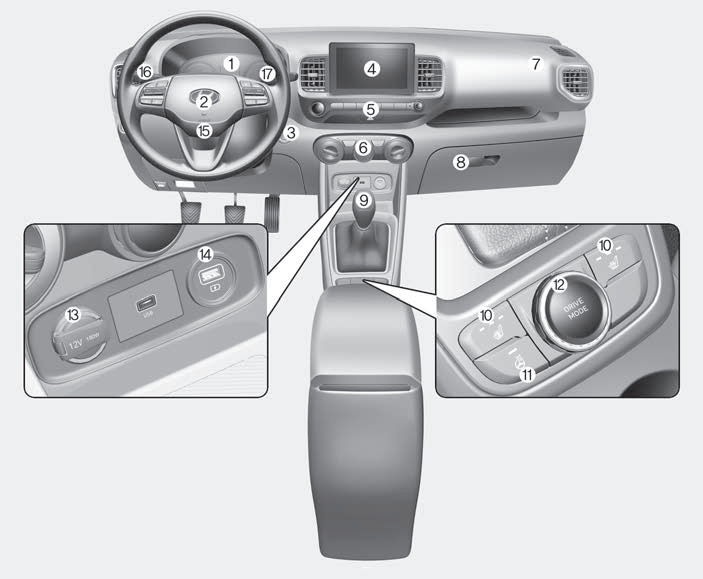Hyundai Venue: Maintenance / Brake/Clutch Fluid
Checking the Brake/Clutch Fluid Level

Check the fluid level in the reservoir periodically. The fluid level should be between MAX and MIN marks on the side of the reservoir.
Before removing the reservoir cap and adding brake/clutch fluid, clean the area around the reservoir cap thoroughly to prevent brake fluid contamination.
If the level is low, add the specified brake/clutch fluid to the MAX level. The level will fall with accumulated mileage. This is a normal condition associated with the wear of the brake linings. If the fluid level is excessively low, have the brake/clutch system checked by an authorized HYUNDAI dealer.
WARNING
If the brake system requires frequent additions of fluid this could indicate a leak in the brake system. Have the vehicle inspected by an authorized HYUNDAI dealer.
WARNING
Do not allow brake fluid to come in contact with your eyes. If brake/clutch fluid comes in contact with your eyes, flush your eyes with clean water for at least 15 minutes and get immediate medical attention.
NOTICE
- Do not allow brake fluid to contact the vehicle’s body paint, as paint damage will result.
- Brake/clutch fluid, which has been exposed to open air for an extended time should NEVER be used as its quality cannot be guaranteed. It should be disposed of properly.
- Do not use the wrong kind of brake fluid. A few drops of mineral based oil, such as engine oil, in your brake system can damage brake system parts.
Information
Use only the specified brake fluid (refer to “Recommended Lubricants and Capacities” in chapter 2).
 Engine Coolant
Engine Coolant
The high-pressure cooling system has a reservoir filled with year-round antifreeze
coolant. The reservoir is filled at the factory.
Check the antifreeze protection and coolant level at least once a year, at the
beginning of the winter season and before traveling to a colder climate...
 Washer Fluid
Washer Fluid
Checking the Washer Fluid Level
Check the fluid level in the washer fluid reservoir and add fluid if necessary.
Plain water may be used if washer fluid is not available...
Other information:
Hyundai Venue (QX) (2020-2025) Service Manual: Seat Heater. Repair procedures
Inspection Front Seat Heater 1. Check for continuity and measure the resistance between terminals No 3 and No 6. Standard value Driver / Assists (cushion + back) : Seat Back : 3...
Hyundai Venue (QX) (2020-2025) Service Manual: Muffler. Components and components location
..
Categories
- Manuals Home
- 1st Generation Venue Owners Manual
- 1st Generation Venue Service Manual
- Vehicle Identification Number (vin), Vehicle Certification Label
- Remote Key
- Child-Protector Rear Door Locks
- New on site
- Most important about car
Instrument Panel Overview

1. Instrument cluster
2. Horn
3. Key ignition switch/ Engine Start/Stop button
4. Infotainment system
5. Hazard warning flasher switch
